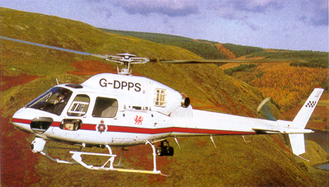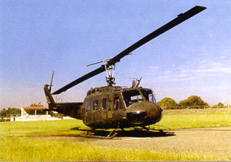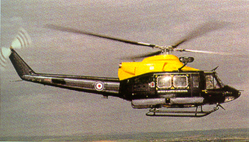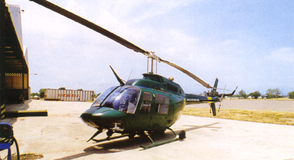|
||||||||||||||||||||||||||||||||||||
| Home > Info Centre > Publications > Alert 1998 > Preparing the JDF Air Wing for the Year 2000 | ||||||||||||||||||||||||||||||||||||
|
|
As we draw close to the next millennium, it is a good time as any to examine our capabilities for future roles. Our current fleet of aircraft is over 20 years old and the technology employed in the aircraft systems is even older. How has Jamaica been served by this fleet? How will our roles change in the future and what changes will we need to make to serve Jamaica effectively? If I were to give the briefest description of the JDF Air Wing I would say it is a close knit family of men and women committed to serving Jamaica. We are charged with the mission of operating and conserving the aviation assets of the Jamaica Defence Force in order to provide safe and reliable aviation support as tasked by HQ JDF. Our roles fall into five basic categories. These are: i. Providing aviation support to the JDF on operations, in training, administration, and fire-fighting services for Up Park Camp. ii. Providing Military Assistance to Civil Authorities (MACA) such as supporting national elections in Haiti , humanitarian operations throughout the region, and VIP transportation. iii. Providing Military Assistance to Civil Communities (MACC) such as relief work in times of crises, Search and Rescue (SAR) operations to locate lost fishermen or hikers, aircraft wreck and survivors. iv. Providing Military Assistance to Civil Ministries (MACM) by providing Emergency Medical Service (EMS) response at crash scenes; hospital transfers; transfers to the island’s only recompression chamber in Discovery Bay; air/sea rescues; and environmental management duties. v. Providing Military Assistance to Civil Powers (MACP) by assisting the Police to enforce the laws of Jamaica in maintaining public order within our territorial area by providing aerial surveillance and reconnaissance; marijuana eradication; drug interdiction; transportation and much more.
In order to make the above possible we engage in extensive training of pilots, aircraft technicians, and all the related specialists. When purchasing aircraft we can ill afford to select purpose-built designs as this would not be economical, given our limited resources. By selecting aircraft with multifarious capability we often have to select an aircraft which is a jack of all trades. This has not changed. However, what has in fact changed is aircraft design. Our aircraft have served us well, but with some limitations. Our Beech King Air performs as VIP transport and SAR platform. However, its low wing design and limited electronics, detract significantly from its suitability as an SAR platform. Modern aircraft carry an electronic surveillance suite to assist the human, and as we say in the JDF, the "Mark 1" eyeball, and, combines SAR with aerial photography and surveillance; cargo transportation; troop transport; mass casualty evacuation; and critical care capability in one hull. Such an aircraft if obtained could be a suitable replacement for our ageing King Air and the BN2A Islander. Meanwhile, Cessna 210 Centurion, is unsuitable as a training aircraft as it does not favour the many rapid power changes to which a training aircraft is subject.
The Bell 206B, though a reliable, cheap and manoeuvrable helicopter, has only one engine. It is therefore limited to overland operations. Although this aircraft performs night cross-country tasks, it is not suitable for this role due to the rugged nature and remoteness of much of our terrain. The Bell UH-1H, although more suitable than the Bell 206B, is expensive to operate and labour intensive in maintenance. Not being a commercially certified aircraft, product support is not readily available outside of the US Military system. The risk of not obtaining genuine parts is high. The Bell 212 has served Jamaica well over the last 23 years. However, the recent designation of Jamaica as an archipelagic state has increased the area of our territorial seas, not to mention our Exclusive Economic Zone(EEZ). The Kingston Flight Information Region (FIR) is also an expansive area of some 98,000 square miles. Jamaica has literally outgrown the Bell 212 which now cannot reach the majority of our maritime areas of jurisdiction and areas of responsibility for air/sea rescue. Despite limitations, the survival of several thousand citizens and tourists can be directly attributed to the emergency medical and rescue services performed by the JDF Air Wing. Our proximity to the Panama Canal and international shipping routes, make us a regular point to which ships deviate when a passenger or crew member falls ill or is injured.
Many of our current roles are expected to remain with us for the foreseeable future with some expanding. Our expanded maritime area requires a fleet of fixed wing aircraft capable of good endurance, high speed, and low speed capability. This will allow them to remain on station at the fringes of our maritime zones for SAR, long range maritime patrols, and in support of our local fishing industry. Such aircraft would need to be fitted with appropriate electronic surveillance suite. The signing of the "Ship Rider" Agreement with the United States of America has opened the door for expansion of our operations in the maritime arena. The chain of command for decision making on whether to board vessels in our waters could well rely on real time information via an airborne platform equipped with forward looking infrared (FLIR) and video cameras. This is a role for which the JDF Air Wing must be ready. The JDF needs reliable, versatile and capable aircraft to perform the roles of the future. Medium lift helicopters need the speed and range to execute air/sea rescue throughout the KINGSTON FIR and our EEZ. Light observation helicopters need to be capable of over water and night cross-country operations so as to allow low load sorties to be done more economically. Our aircraft need to incorporate technology that makes them safer, stronger, more reliable, less prone to corrosion in our saline environment and more cost effective. Of course to effectively employ a new fleet of aircraft, our personnel would have to be appropriately re-trained. Current technology requires aircraft technicians and aircrew who are of the highest levels of competence and professionalism. Our basic levels of education have to be higher and our culture has to become one of increased safety awareness and security consciousness. This in my view is where the JDF AW needs to be heading and is preparing to go.
|
|||||||||||||||||||||||||||||||||||
|
|
||||||||||||||||||||||||||||||||||||




